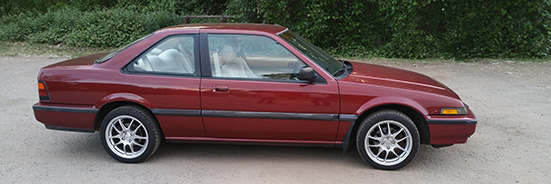If you know anything about car restoration, you know that door and window trims can be a very difficult part of the restoration. Watch a show on car restoration and you'll see builders who are yanking out old parts with sledgehammers and Sawzalls suddenly slow to a careful crawl when they get to the trim pieces. Why? Because the pieces are irreplaceable in a lot of cases. Restoration buffs will spend a lot of time and care scrutinizing and restoring old trim because it's so visible and so difficult to fix.
The same holds true for our trim. We're dealing with door bump strips turning grey and windows trims fading, peeling and chipping. Unlike other car restorers, who can simply bend their trims straight and re-chrome, we have to put greater thought and clever-ness into our restorations because of the unique construction of our trim.
- Our bump strips are a molded, rubberized piece. You can't really re-chrome that. You have to devise a coating.
- Our windows trims include molded plastic flanges and integrated rubber window seals. To the extent you can, you want to preserve those.
Consider this thread an open discussion on restoration tricks and strategies. I'll add my tips and tricks as I am able. Please feel free to add your own. We've been dealing with this issue for years now, and a lot of what we used to do (dressings, preservatives, paint, etc.) isn't working anymore. How do we take this to the next level?





 Reply With Quote
Reply With Quote




Bookmarks